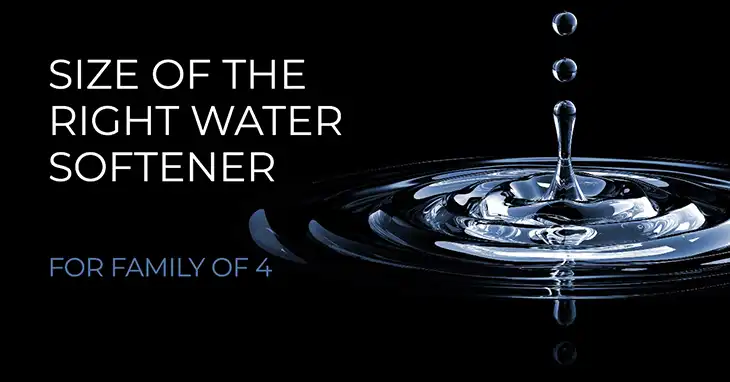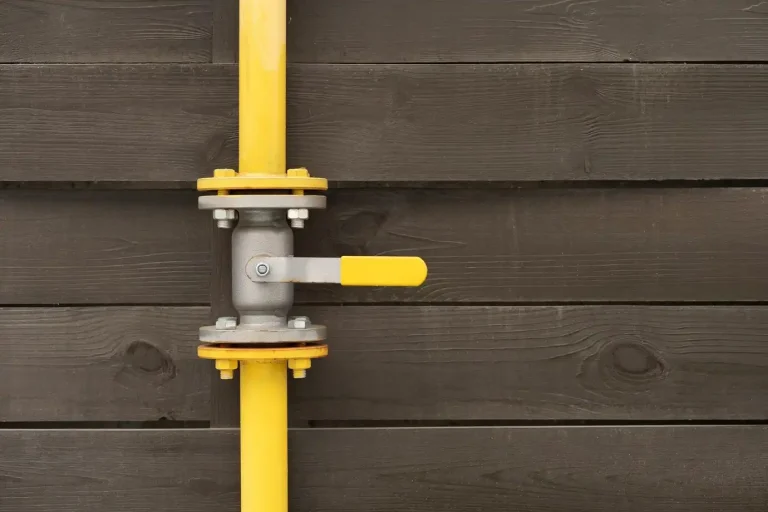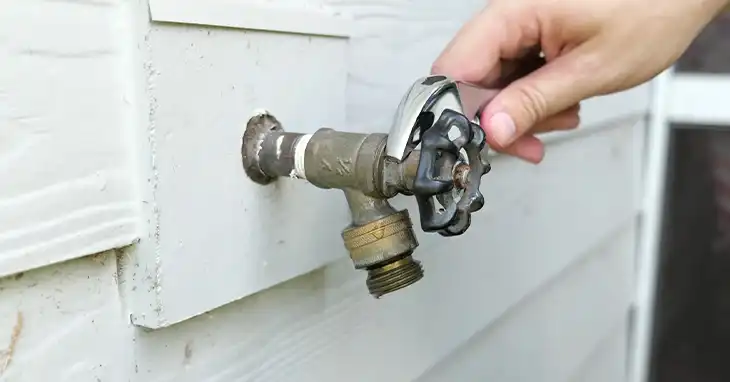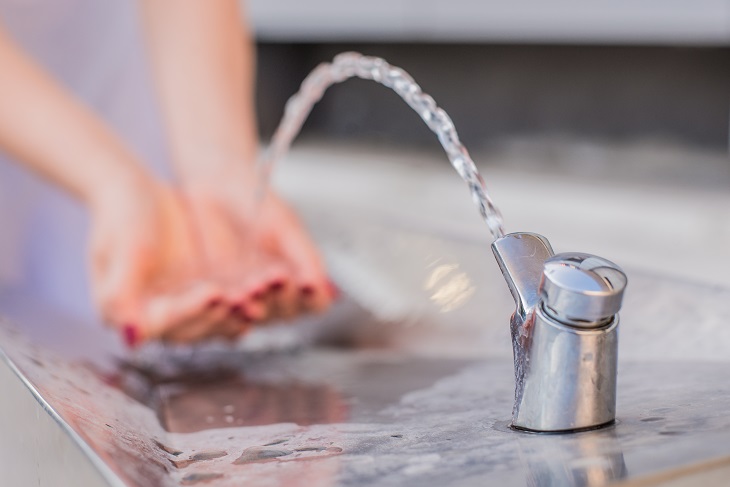Can You Run Two Shower Heads from One Valve?
Having multiple shower heads in your shower can offer a luxurious spa-like experience right in your own home. But the question is, can you run two shower heads from one valve? Or will you need to go through the complex installation process of multiple valves?
The answer is a resounding yes, but it’s essential to consider a few key factors to ensure a successful and satisfying setup. With that being said, let’s now take a look at what you need to consider to run two shower heads with one valve.
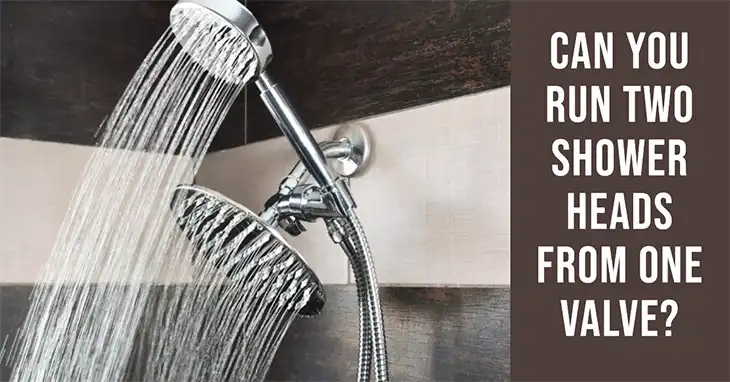
Running Two Shower Heads with One Valve
It’s Possible but with Considerations
Running two shower heads with a single valve is entirely possible, but it’s crucial to understand the potential impacts on water pressure and flow. While it might seem as simple as connecting two shower heads to one valve, there are a few essential considerations to keep in mind.
Water Pressure Impact
Using one valve to supply water to two shower heads can potentially affect the water pressure at each shower head, especially if both are used simultaneously. When a single valve divides the water flow between two outlets, the pressure at each shower head may decrease. This is where the type of valve and shower heads come into play.
Valve Capacity
Before attempting to run two shower heads from one valve, it’s essential to check the valve’s flow rate capacity. Most standard valves are designed to handle the flow rate of a single shower head, so you’ll need to ensure that your valve can accommodate the combined flow rate of two shower heads. Consult the manufacturer’s specifications or seek advice from a professional plumber to determine if your valve is suitable for the task.
Shower Head Type
Using low-flow shower heads can significantly mitigate potential pressure issues when running two shower heads from a single valve. Low-flow shower heads are designed to conserve water while still providing a satisfying shower experience. By reducing the overall water consumption, you can help maintain adequate pressure at both shower heads, even when using a single valve.
Benefits of Using One Valve
While running two shower heads from a single valve may present some challenges, it also offers several advantages worth considering.
Cost-Effectiveness
Installing a separate valve system for each shower head can be costly, especially if it requires extensive plumbing modifications. Using a single valve can be a more cost-effective solution, as it eliminates the need for additional valves and associated labor costs.
Simplicity
Having a single control point for water temperature and on/off functionality can simplify the showering experience. With one valve, you can easily adjust the water temperature and flow without having to juggle multiple controls.
Aesthetics
A one-valve setup can create a cleaner and more minimalist look in your bathroom. With fewer visible valves and controls, your shower area can maintain a streamlined and visually appealing appearance.
Alternatives to Single-Valve System
While running two shower heads from a single valve is possible, there are alternative options to consider, depending on your specific needs and preferences.
Two-Valve System
Installing a separate valve for each shower head can provide independent control over water pressure and temperature. This option ensures optimal water pressure and flow for each shower head, regardless of whether they are used simultaneously or individually. However, it’s typically more expensive and may require additional plumbing work.
Pressure-Balancing Valve
If you’re concerned about maintaining consistent water pressure when using both shower heads simultaneously, consider installing a pressure-balancing valve. These valves are designed to automatically adjust and maintain a constant water pressure, even when the flow is divided between multiple outlets.
Adding a Shutoff Valve
Another option is to add a shutoff valve to one of the shower heads when using a single main valve. This allows you to turn off the flow to one shower head when not in use, ensuring optimal pressure for the other shower head. However, it does require additional plumbing work and may not be as convenient as a separate valve system.
Final Words
Running two shower heads with a single valve is indeed possible, but it requires careful consideration of factors such as water pressure, valve capacity, and shower head selection. While it offers benefits like cost-effectiveness, simplicity, and a minimalist aesthetic, it’s essential to weigh the pros and cons against alternative options like a two-valve system or pressure-balancing valves.
Ultimately, consulting with a professional plumber is recommended to assess your specific shower setup and water pressure. They can provide expert guidance on the most suitable solution for your needs, ensuring a luxurious and satisfying shower experience with two shower heads.
FAQs
Can I run two different types of shower heads (e.g., rainfall and handheld) with one valve?
Yes, you can run different types of shower heads with a single valve, as long as the valve’s flow rate capacity can accommodate the combined water demand.
Will using two shower heads significantly increase my water bill?
Yes, running two shower heads simultaneously will likely increase your water consumption and, consequently, your water bill. However, using low-flow shower heads can help mitigate this increase.
Can I install two shower heads without modifying my existing plumbing?
In some cases, you may be able to install two shower heads without extensive plumbing modifications, depending on the existing setup and available space. However, it’s always best to consult a professional plumber for an assessment.
Can I use a diverter valve to switch between two shower heads?
Yes, a diverter valve can be used to switch between two shower heads, allowing you to use one at a time while maintaining optimal water pressure. However, this option may not provide the simultaneous use of both shower heads.
How do I choose the right shower heads for a dual-shower head setup?
When choosing shower heads for a dual setup, consider factors like water flow rate, spray patterns, and compatibility with your existing plumbing. Low-flow shower heads with adjustable spray patterns can be a great choice for maximizing water conservation and customizing your shower experience.

